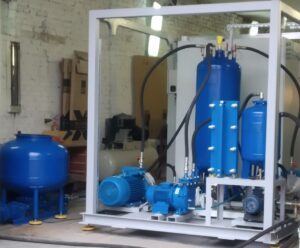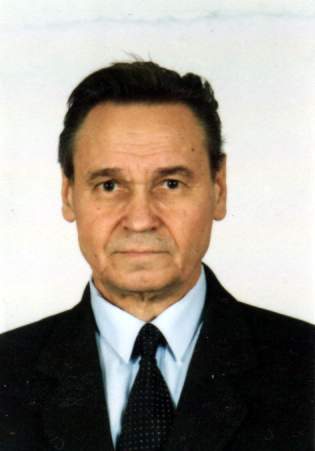Research directions
- development of new energy-saving technologies based on the combined action of electromagnetic energy of the microwave range, cavitation and other types of effects of physical fields on materials and objects;
- creation of promising microwave technology for use in technological processes in the processing of food, agricultural, other types of products and materials for various purposes;
- development of new technologies in the field of alternative energy;
- development of new methods for processing radar signals.
Current tasks
- development and testing of algorithms for detection and recognition on real signals from surveillance radars;
- development of a prototype equipment for an automated system for detecting and recognizing subtle air objects for surveillance radars;
- Development of new technologies based on the combined effect of microwave electromagnetic energy and other types of energy on materials and objects.
- Creation of promising microwave technology for processing food, agricultural and other types of products and materials for various purposes.
- development of new technologies in the field of alternative energy.
- Implementation of the development carried out according to Scientific and Technical Regulation No. DZ / 40-2018 “Development of design documentation for a pilot plant for the production of biofuel in the utilization of biogenic waste”;
- Creation of an automated system for detecting and recognizing subtle air objects for observation radars based on spatial-semantic signal models built using the mathematical algebraic apparatus of finite predicates;
- Search for potential investors among utilities dealing with sewage treatment and enterprises.
Educational process
The results obtained during the implementation of research work “Development of an automated system for processing process knowledge and decision-making in surveillance radars to identify and recognize inconspicuous air objects” are used in the educational process of Kharkiv National University of Radio Electronics, Kharkiv National Automobile and Highway University and Ivan Kozhedub National Air Force University in training professionals, including highly qualified scientists.
Undergraduate and graduate students were involved in the work.
The obtained scientific results:
- Doctors of Science in Programme Software Engineering – Shubin I.Yu. Doctoral thesis “Methods, models and information technologies for refactoring exploited web-oriented hypermedia systems”.
- 2 PhD in Programme Software Engineering: Snisar S.M. thesis “Information technology and methods of detecting radar marks of dissimilar moving objects” and Ashurova E.S. – thesis “Information technology for creating software metrics in the development of adaptive systems.”
- 2 masters in Programme Software Engineering: Kozyrev A.D. master’s thesis “Analysis of information technologies for the development of hypermedia Web-oriented systems” and Pituukova N.A. master’s thesis “Research of signal processing algorithms in intelligent radar systems.”
Research results
As a result of the implementation of scientific and technical work under the state order (Contract No. DZ-40), design documentation was developed for a pilot plant for the production of biofuel in the utilization of biogenic waste, and an operating pilot plant was manufactured. The installation implements a technology developed and tested by laboratory specialists.
By order of the Institute of High Technologies of the Academy of Sciences of Heilongjiang Province (Harbin, China), an experimental sample of an installation for producing alternative biofuels from biogenic waste (sludge, food waste, etc.) was manufactured and handed over to the customer, where it successfully passed acceptance tests.
Research results obtained:
- Winners of the international competition of innovation and investment projects “Kharkiv Initiatives” – The best innovative project of the “Information and Communication Technologies” cluster.
- Predicate models of process knowledge about inconspicuous airborne objects based on the use of the mathematical algebraic apparatus of finite predicates are proposed; they are suitable for use in intelligent radar systems when creating automatic systems for detecting and recognizing the marks of signals from inconspicuous aircraft and other airborne objects. The developed models take into account the dynamics of the interperiodic configurations of the primary patterns of the signal environment, formed by a set of radar signals received during the operation of the radar. These initial pictures contain objective information about airborne objects. On the basis of radar marks, symbolic predicate models of images of air objects are formed, which serve as the basis for creating a virtual space of process knowledge of inter-period processing of signal information in surveillance radars. The symbolic model makes it possible, on the basis of information about the behavior of the signal in each analyzed processing element and predicates of events (features), to distinguish the processing element from the object and the interference not by exceeding the threshold, but as a result of the analysis of qualification features, which is most effective in identifying weak reflected signals. from subtle objects.
- The developed processing methods based on the predicate model of process knowledge make it possible to automate the processes of detecting and recognizing subtle air objects and making decisions.
- The developed algorithms and programs of an intelligent automated system for detecting and recognizing subtle air objects of observation radars look like a hierarchical structure in a digital predicative form:
- the first level of the processing algorithm is the presentation of the data obtained as a result of observations in an easy-to-use form;
- the second level is a description of unary and binary connections between data, which determine the mechanism for transforming input data in the form of a matrix of numbers into a matrix of knowledge, taking into account predicate information about relationships (connections) between input data;
- the third level – the accumulation of knowledge based on data and information about the relationships between them is presented as obtaining new networks of relationships in the form of predicate features;
- the fourth level of meta-knowledge unites all previous levels, allowing you to make decisions about the detection and recognition of radar marks. Algorithmically, the level of meta-knowledge has the form of a predicate operation that connects all the information received and in the process of processing it receives the final decision.
Programs have been developed that implement hierarchical algorithms for the developed automated process knowledge processing system for identifying and recognizing low-mobility air objects in observation radars.
New information technologies for signal processing are developed on the basis of both inter- and multi-view signal processing operations, taking into account the capabilities of the developed: predicate models of process knowledge, methods of processing process knowledge using the algebra of finite predicates, a decision-making method based on known precedents.
Publications
- Loshakov, V., Moskalets, M., Martynchuk, O., Abdenour, D., Ageyev, D., Sielivanov, K., Ismael, A.-V. S. A. I., & Martynchuk, O. (2021). Use of Adaptive Polarization Processing of Signals in Perspective Mobile Communication Systems. 2020 IEEE International Conference on Problems of Infocommunications Science and Technology, PIC S and T 2020 – Proceedings, 803–806.
- Muliar, B., Koliadenko, Y., Moskalets, M., Loshakov, V., & Ageyev, D. (2022). Interaction Model and Phase States at Frequency Resource Allocation in a Grouping of Radio-Electronic Equipment of 5G Mobile Communication Network. 2022 IEEE 9th International Conference on Problems of Infocommunications Science and Technology, PIC S and T 2022 – Proceedings, 495–501.
- Semenov, A., Semenova, O., Meulesteen, S., Koval, K., Datsiuk, D., Fomenko, H., & Ageyev, D. (2022). Cellular IoT Personal Health and Safety Monitoring. 2022 IEEE 9th International Conference on Problems of Infocommunications Science and Technology, PIC S and T 2022 – Proceedings, 433–438.
- Sokolov, V., Kipchuk, F., Skladannyi, P., Zhyltsov, O., & Ageyev, D. (2022). Method for Increasing the Various Sources Data Consistency for IoT Sensors. 2022 IEEE 9th International Conference on Problems of Infocommunications Science and Technology, PIC S and T 2022 – Proceedings, 522–526.
- Zhirnov, V.V., Solonskaya, S.V. Process knowledge bout observed objects in intellectual monitoring systems / Telecommunications and Radio Engineering – 2020. Volume 79, Issue 18, Pages 1599-1607.
- Zhirnov, V.V., Solonskaya, S.V. Intelligent system for detection of low-visible air objects in surveillance radars/ Telecommunications and Radio Engineering – 2020. Volume 79, Issue 17, Pages 1513-1519.
- Solonska S., Zhyrnov V. Adaptive semantic analysis of radar data using fuzzy transform// Data-Centric Business and Applications. ICT Systems-Theory, Radio-Electronics, Information Technologies and Cybersecurity (Volume 5). Lecture Notes on Data Engineering and Communications Technologies, Vol 48, Springer, 2021,P. 157-179.
- Solonskaya, S.V., Zhirnov, V.V. Signal processing in the intelligence systems of detecting low-observable and low-doppler aerial targets / Telecommunications and Radio Engineering. 2018. Vol. 77(20). p. 1827-1835
- Solonskaya, S.V., Zhirnov, V.V. Intelligent analysis of radar data based on fuzzy transforms / Telecommunications and Radio Engineering (English 0.587translation of Elektrosvyaz and Radiotekhnika). 2018. Vol. 77(15). p. 1321-1329
- Radivilova, T., Kirichenko, L., Ageiev, D., Bulakh, V. The Methods to Improve Quality of Service by Accounting Secure Parameters / Advances in Intelligent Systems and Computing. 2019. Vol. 938, p. 346-355.
- Al-Vandavi, I.S.A., Moskalets, M., Popovska, K., Ageyev, D., Krasnozheniuk, Y. Method for Planning SAN Based on FTTH Technology. Data-Centric Business and Applications. Lecture Notes on Data Engineering and Communications Technologies, vol 69. Springer, Cham. 2021,P. 333–353.
- Loshakov, V., Moskalets, M., Ageyev, D., Drif, A., Sielivanov, K. Adaptive space-time and polarisation-time signal processing in mobile communication systems of next generations. Data-Centric Business and Applications. ICT Systems-Theory, Radio-Electronics, Information Technologies and Cybersecurity (Volume 5). Lecture Notes on Data Engineering and Communications Technologies, Vol 48, Springer, 2021, P. 469–488.
- Hu, Z., Buriachok, V., Bogachuk, I., Sokolov, V., Ageyev, D. Development and operation analysis of spectrum monitoring subsystem 2.4–2.5 GHZ range (Book Chapter). Data-Centric Business and Applications. ICT Systems-Theory, Radio-Electronics, Information Technologies and Cybersecurity (Volume 5). Lecture Notes on Data Engineering and Communications Technologies, Vol 48, Springer, 2021, P. 675–709.
- Igor Shubin, Svitlana Solonska, Stanislav Snisar, Volodymyr Zhyrnov, Vlad Slavhorodskyi, Victoria Skovorodnikova “Efficiency Evaluation for Radar Signal Processing on the Basis of Spectral-Semantic Model”. 2020 15th International Conference on Advanced Trends in Radioelectronics, Telecommunications and Computer Engineering, 2020 , 25 – 29 February, P. 171-174.
- V. Zhyrnov, S. Solonskaya, V. Zaritskiy “Method for protecting survey radars from imitation interference”. 9th international conference “Information systems and technologies ICT-2020”. Kharkiv: KhNURE, 2020. – Р. 132-135.
- Жирнов В.В., Солонская С.В. «Метод преобразования символьных радарных отметок малозаметных подвижных объектов на основе эффекта Тальбота». // Радиотехника: Харьков: ХНУРЭ, 2021.- № 205 – С 129-137.
- Жирнов В.В., Солонская С.В. «Предикатная модель процессных знаний при обнаружении и распознавании пачечной структуры сигналов от летательных аппаратов в обзорных РЛС». // Радиотехника: Харьков: ХНУРЭ, 2020.-№ 201 – С 137-144.
- Солонская С.В., Жирнов В.В. «Предикатная модель процессных знаний при обнаружении и распознавании протяженных объектов типа облака, тучи, «ангел-эхо» в обзорных РЛС». // Радиотехника: Харьков: ХНУРЭ, 2020.-№ 202 – С 164-172.
- Жирнов В.В., Солонская С.В. «Семантический анализ флуктуаций радиолокационной пачки для идентификации воздушных объектов». // Радиотехника: Харьков: ХНУРЭ, 2020.-№ 203 – С 197-203.
- Zhyrnov Volodymyr, Solonska Svitlana, Dokhov Oleksandr. Method for Automatic Detection and Recognition of Aerial Objects. 10th International Conference “Information Systems and Technologies IST-2021”. Kharkiv-Odessa, September 13-19, 2021, pp. 108-112. ISBN 978-617-7519-59-0.
- В.В. Жирнов, С.В. Солонская, В.И. Зарицкий «Метод борьбы с нестационарными естественными и имитирующими помехами в интеллектуальных обзорных РЛС». // Радиотехника: Харьков: ХНУРЭ, 2021.-№ 206– С. 115 – 121.



